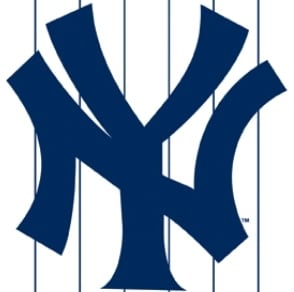 Too many companies believe that brand identity is just a cute logo or slogan, but those aspects are two-dimensional. A brand’s identity depends on how buyers respond to the brand. Initially, it is based on the customers’ perception. But ultimately, it’s based on the brand’s reputation.
Too many companies believe that brand identity is just a cute logo or slogan, but those aspects are two-dimensional. A brand’s identity depends on how buyers respond to the brand. Initially, it is based on the customers’ perception. But ultimately, it’s based on the brand’s reputation.
Brand Identity in Professional Baseball
You can find a good example in professional baseball. The Cleveland Indians, the Miami Marlins, and the Toronto Blue Jays all hoped to tweak their brand identities this off-season by introducing new uniforms, team names, and logos. The New York Yankees, on the other hand, has made precious few changes to its uniform in over a hundred years of playing, and yet that franchise has no trouble with brand identity. That’s because they know that the team’s reputation — winning 28 World Series — is more important to the Yankees brand identity.
Factors That Contribute to Brand Identity
Indeed, a company establishes its brand identity when it is able to communicate positive and meaningful aspects of the brand to all the different buyers in the distribution channel as well as to the general public. To do so successfully, you may want to consider the following factors that all contribute to a brand’s reputation and identity:
1. What is the message your brand identity conveys?
Is your product durable or solid as a rock? If it is communications, is it lightning fast? Your brand identity ideally will communicate the attributes your product delivers.
2. What are people saying about your brand?
Brand identity is built by everything from word-of-mouth and third-party endorsements to Yelp and recalls! An established brand has a history; it can be either famous or notorious. Brand identity for a new brand – one that has not yet developed a reputation — is going to depend largely on positioning and ultimately third-party endorsements.
3. What is your brand’s position?
What is the product? How is it categorized? Is it business-to-business? Or business-to-consumer? Is it a durable good or an electronic? Does it create its own category? Ferrari positioned itself as a luxury sports car. It isn’t competing with VW. Apple positioned its iPad somewhere between a telephone and a laptop.
4. Is your brand recognizable?
If your product is a hammer, does it look like a hammer? The look of your product and your brand name should imply or state what the product does. That helps develop your product’s brand identity.
5. How is your brand distinguished from competing products?
What makes it stand out? Virgin America, for example, distinguishes itself from other airlines with a name that speaks volumes about its reputation and what it delivers. Its name sounds innocent, clean, untarnished, and fresh. Likewise, Virgin distinguishes itself from other airlines by its fresh ideas. Case in point: Its famous leader, Richard Branson, titled his new book, “Screw Business as Usual.”
In my experience, brand identity is much more than a cute logo, name, or slogan, or anything else that is two-dimensional. What breathes life into brand identity is its reputation, and that is developed over time and results in the consumers’ perception.
Of course, there’s much more that could be said on this subject. What’s been your experience? Michael Houlihan, co-founder of Barefoot Wine, the largest selling wine brand in the nation, invites you to join the discussion on Brand Identity by offering your comments, thoughts, and opinions below.



